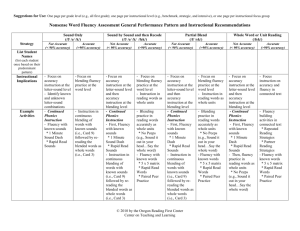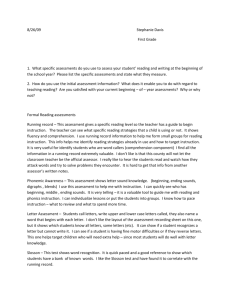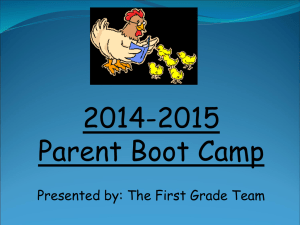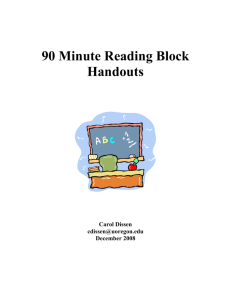Instructional Planning based on Nonsense Word Fluency Assessment
advertisement
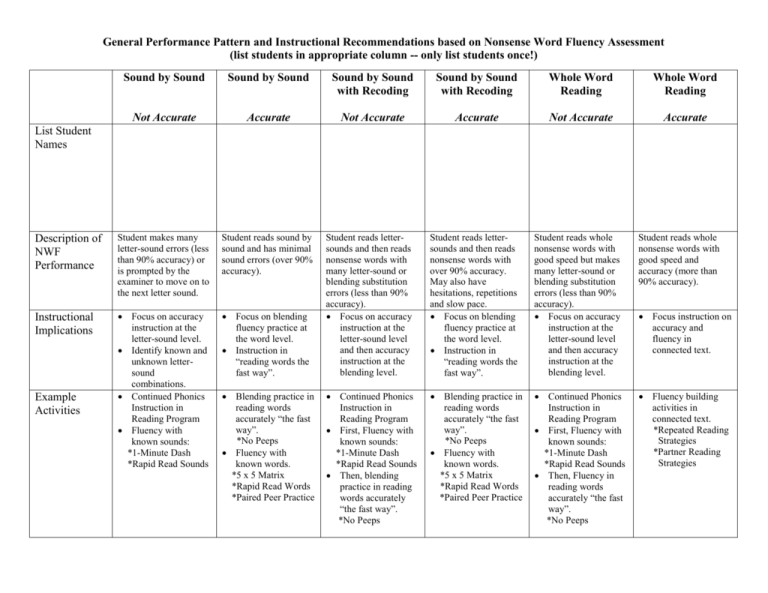
General Performance Pattern and Instructional Recommendations based on Nonsense Word Fluency Assessment (list students in appropriate column -- only list students once!) Sound by Sound Sound by Sound Sound by Sound with Recoding Sound by Sound with Recoding Whole Word Reading Whole Word Reading Not Accurate Accurate Not Accurate Accurate Not Accurate Accurate Description of NWF Performance Student makes many letter-sound errors (less than 90% accuracy) or is prompted by the examiner to move on to the next letter sound. Student reads sound by sound and has minimal sound errors (over 90% accuracy). Instructional Implications Focus on accuracy instruction at the letter-sound level. Identify known and unknown lettersound combinations. Continued Phonics Instruction in Reading Program Fluency with known sounds: *1-Minute Dash *Rapid Read Sounds Focus on blending fluency practice at the word level. Instruction in “reading words the fast way”. List Student Names Example Activities Blending practice in reading words accurately “the fast way”. *No Peeps Fluency with known words. *5 x 5 Matrix *Rapid Read Words *Paired Peer Practice Student reads lettersounds and then reads nonsense words with many letter-sound or blending substitution errors (less than 90% accuracy). Focus on accuracy instruction at the letter-sound level and then accuracy instruction at the blending level. Student reads lettersounds and then reads nonsense words with over 90% accuracy. May also have hesitations, repetitions and slow pace. Focus on blending fluency practice at the word level. Instruction in “reading words the fast way”. Student reads whole nonsense words with good speed but makes many letter-sound or blending substitution errors (less than 90% accuracy). Focus on accuracy instruction at the letter-sound level and then accuracy instruction at the blending level. Student reads whole nonsense words with good speed and accuracy (more than 90% accuracy). Continued Phonics Instruction in Reading Program First, Fluency with known sounds: *1-Minute Dash *Rapid Read Sounds Then, blending practice in reading words accurately “the fast way”. *No Peeps Blending practice in reading words accurately “the fast way”. *No Peeps Fluency with known words. *5 x 5 Matrix *Rapid Read Words *Paired Peer Practice Continued Phonics Instruction in Reading Program First, Fluency with known sounds: *1-Minute Dash *Rapid Read Sounds Then, Fluency in reading words accurately “the fast way”. *No Peeps Fluency building activities in connected text. *Repeated Reading Strategies *Partner Reading Strategies Focus instruction on accuracy and fluency in connected text.
